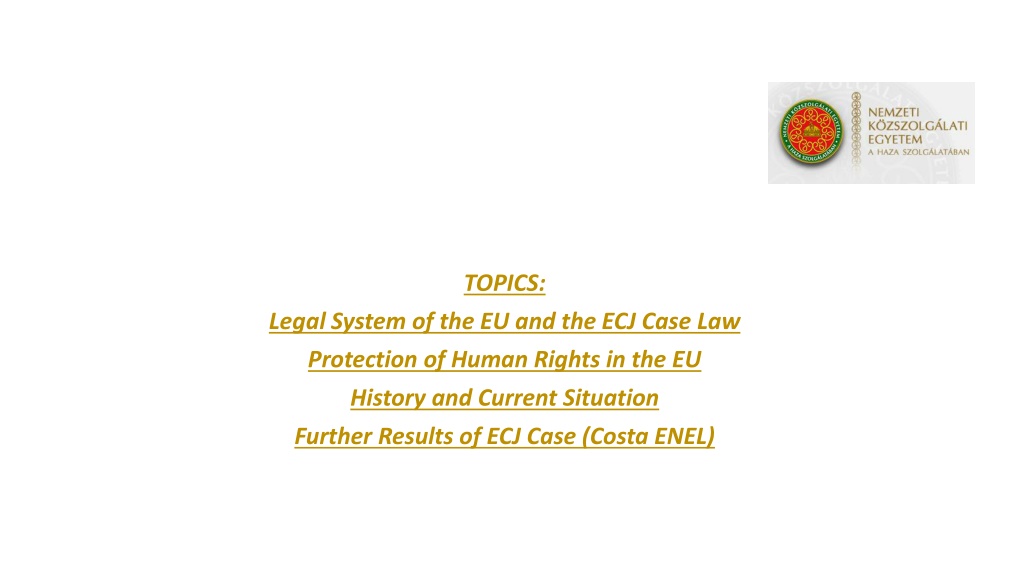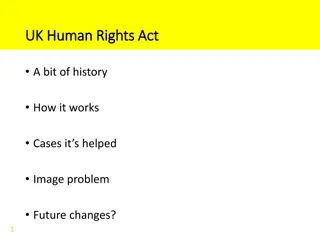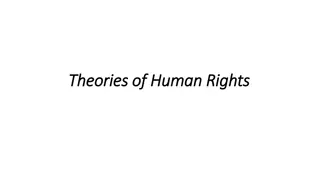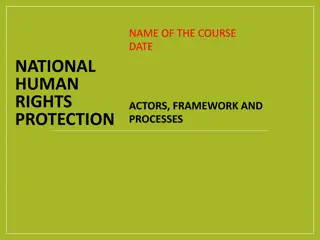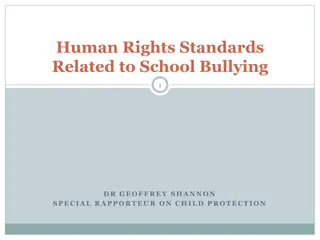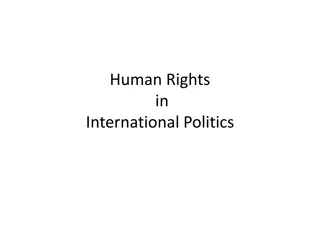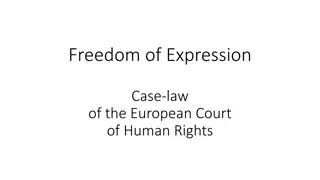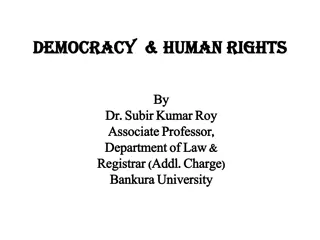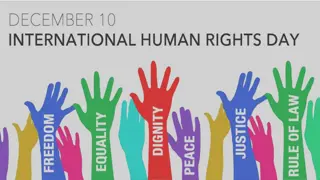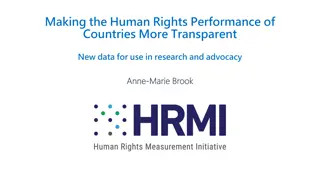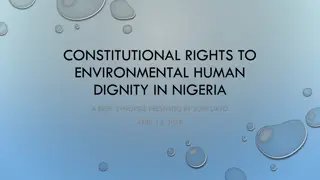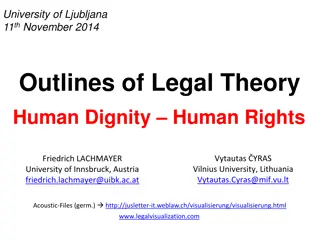Evolution of Human Rights Protection in the EU
The journey of human rights protection in the EU, from the absence of explicit rules to the affirmation of fundamental rights by the CJEU, influenced by case law and the evolution from judicial to codified protection. National courts' concerns on ensuring consistency with constitutional values led to affirmations of human rights protection. The CJEU recognized fundamental rights as part of Community law, drawing from common constitutional traditions and international treaties. The positive reactions by national courts, like the German Constitutional Court, further solidified human rights safeguards within the European Community's legal framework.
Download Presentation

Please find below an Image/Link to download the presentation.
The content on the website is provided AS IS for your information and personal use only. It may not be sold, licensed, or shared on other websites without obtaining consent from the author. Download presentation by click this link. If you encounter any issues during the download, it is possible that the publisher has removed the file from their server.
E N D
Presentation Transcript
TOPICS: Legal System of the EU and the ECJ Case Law Protection of Human Rights in the EU History and Current Situation Further Results of ECJ Case (Costa ENEL)
The protection of fundamental rights in the EU How human rights protection evolved from judicial protection of fundamental rights to codification in the Treaties The European Communities (now the European Union) were originally created as an international organisation with an essentially economic scope of action. There was therefore no perceived need for explicit rules concerning respect for fundamental rights, which for a long time were not mentioned in the Treaties, and were anyway considered as guaranteed by the 1950 European Convention for the Protection of Human Rights and Fundamental Freedoms (ECHR), to which the Member States were signatories.
The protection of fundamental rights in the EU How human rights protection evolved from judicial protection of fundamental rights to codification in the Treaties Once the Court of Justice of the European Union (CJEU) had affirmed the principles of direct effect and of primacy of European law, but refused to examine the compatibility of decisions with the national and constitutional law of Member States (Stork, case 1/58; Ruhrkohlen-Verkaufsgesellschaft, joined cases 36, 37, 38-59 and 40-59), certain national courts began to express concerns about the effects which such case law might have on the protection of constitutional values such as fundamental rights. If European law was to prevail even over domestic constitutional law, it would become possible for it to breach fundamental rights. To address this theoretical risk, in 1974 the German and Italian constitutional courts each adopted a judgment in which they asserted their power to review European law in order to ensure its consistency with constitutional rights (Germany: Solange I; Italy Frontini). This meant that national courts were able to limit the enforcement of European Law as long as there was no human rights protection explicitly provided in the frameworks of European Law.
The protection of fundamental rights in the EU How human rights protection evolved from judicial protection of fundamental rights to codification in the Treaties This led the CJEU to affirm through its case law the principle of respect for fundamental rights, by stating that fundamental rights are enshrined in the general principles of Community law protected by the Court (Stauder, case 29-69). These are inspired by the constitutional traditions common to the Member States (Internationale Handelsgesellschaft, case 11-70) and by international treaties for the protection of human rights to which Member States are parties (Nold, case 4-73), one of which is the ECHR (Rutili, case 36-75). The ECJ started to protect Human Rights in the frameworks of European Law. Solange II decision of the German Constitutional Court: As a result of this positive reaction of the European Court of Justice, the national constitutional courts (especially that of Germany) confirmed that the level of safeguarded human rights protection in the European Community (in the court rulings of the ECJ) are now comparable with the quality of human rights protection in the national law. As long as the EU keeps on providing this protection of human rights, the German Constitutional court is not going to intervene and will for example not put any limits to the enforcement of European Law in German national law.
The protection of fundamental rights in the EU How human rights protection evolved from judicial protection of fundamental rights to codification in the Treaties Further development in the written European Law (Codification) With the progressive expansion of EU competences to policies having a direct impact on fundamental rights such as justice and home affairs (JHA), then developed into a fully-fledged area of freedom, security and justice (AFSJ) the Treaties were changed in order to firmly anchor the EU to the protection of fundamental rights. The Treaty of Maastricht included reference to the ECHR and the common constitutional traditions of Member States as general principles of EU law, while the Treaty of Amsterdam affirmed the European principles upon which the EU is founded (in the Treaty of Lisbon, values as listed in Article 2 TEU) and created a procedure to suspend the rights foreseen by the Treaties in cases of serious and persistent violations of fundamental rights by a Member State. The drafting of the Charter of Fundamental Rights and its entry into force together with the Treaty of Lisbon are the latest developments in this process of codification intended to ensure the protection of fundamental rights in the EU.
The protection of fundamental rights in the EU How human rights protection evolved from judicial protection of fundamental rights to codification in the Treaties The EU s accession to the European Convention for the Protection of Human Rights and Fundamental Freedoms (ECHR) As the ECHR is the leading instrument for the protection of fundamental rights in Europe, to which all Member States have acceded, EC accession to the ECHR appeared as a logical solution to the need to link the EC to fundamental rights obligations. The European Commission repeatedly proposed (in 1979, 1990 and 1993) the accession of the EC to the ECHR. Requested for an opinion on the matter, the Court of Justice found in 1996, in its opinion 2/94, that the Treaty did not foresee any competence for the EC to enact rules on human rights or to conclude international conventions in this field, making accession legally impossible. The Treaty of Lisbon remedied this situation by introducing Article 6(2), which provides that the EU shall accede to the ECHR. This means that the EU (as is already the case for its Member States) will become subject, as regards respect for fundamental rights, to review by a legal body external to itself, namely the European Court of Human Rights (ECtHR).
The protection of fundamental rights in the EU How human rights protection evolved from judicial protection of fundamental rights to codification in the Treaties The EU Charter of Fundamental Rights In parallel to the external scrutiny mechanism foreseen by EC accession to the ECHR to ensure the conformity of legislation and policies with fundamental rights, an internal scrutiny mechanism was needed at EC level to allow for a preliminary and autonomous judicial check by the CJEU. To do so, the existence of a bill of rights specific to the EU was necessary, and at the 1999 European Council in Cologne it was decided to convoke a Convention to draft a Charter of Fundamental Rights. The Charter was solemnly proclaimed by Parliament, the Council and the Commission in Nice in 2000. After being amended, it was proclaimed again in 2007. However, only with the adoption of the Treaty of Lisbon on 1 December 2009 did the Charter come into direct effect, as provided by Article 6(1) TEU, thereby becoming a binding source of primary law.
The protection of fundamental rights in the EU How human rights protection evolved from judicial protection of fundamental rights to codification in the Treaties The EU Charter of Fundamental Rights While the scope of application of the Charter is, on the one hand, potentially very broad, as most of the rights it recognises are granted to everyone regardless of nationality or status, Article 51 does on the other hand limit its application to the EU institutions and bodies and, when they act to implement EU law, to the Member States. This provision serves to draw the boundary between the scope of the Charter and that of national constitutions and the ECHR.
Thank you for your attention! Thank you for your attention!
